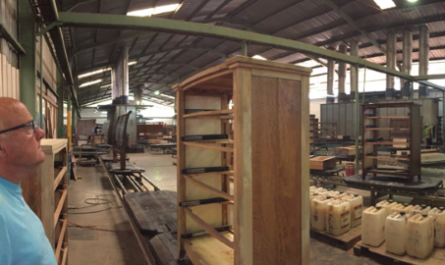WASHINGTON — News that the United States International Trade Commission is investigating the economic impact of China tariffs on businesses and consumers gives one the impression that something important will come of out of its inquiry.
Yet it’s really not clear what outcome — if any — the ‘investigation’ will have, especially given that most industries have already moved product to non-tariff countries or perhaps have gotten out of certain categories. This includes the furniture industry, which shifted both case goods and upholstery to countries like Vietnam and Malaysia pre-Covid in order to avoid tariffs as high as 25% out of China.
According to research from Richmond, Va.-based Mann, Armistead & Epperson, furniture imports from China fell from $18.1 billion in 2018 — the year tariffs first went into place — to $13.4 billion the following year. They dropped again to $11.2 billion in 2020 before creeping back up to $13.9 billion in 2021.
But overall, furniture imports rose during the same period from just over $31 billion to $37.4 billion last year. Key beneficiaries of the shift from China were Vietnam, Malaysia, Indonesia, India and Mexico, each of which saw their furniture shipments to the U.S. grow each year during the period in various categories.
For those familiar with tariffs, a key goal is to impose punitive measures in response to their unfair trade practices, and in China’s case, its practices regarding the alleged stealing of intellectual property and innovation. By restricting imports across many different product segments — commodities and non-commodities alike — the hope is also that domestic manufacturers see an increase in demand for their products.
But its not entirely clear that this happened. That’s because while the tariffs may have limited imports from China, importers simply shifted product to other countries around the world, most of which are in Asia. The same could be said for the antidumping case on wooden bedroom furniture, which mainly shifted bedroom production to Vietnam, followed later by Malaysia and Indonesia.
In fact, the global pandemic — and related supply chain disruptions including, but not limited to the cost and availability of containers — more likely boosted demand for domestically produced upholstery and wood furniture than China tariffs. That’s largely because many retailers were able to get product more quickly than goods ordered from Asia.
True, lead times also have been extremely long for domestic producers. But the same is true, if not worse, for imports. To put things in perspective, consider that many imported goods ordered eight to nine months ago or more are just arriving, creating a logjam of inventory just as consumer demand cools down.
It could also be hard for the ITC to determine the exact impact tariffs have had on the cost of finished goods out of China. While 25% is a hefty sum, it has been paled by the cost of flowing goods from Asia in general not to mention the challenge of getting certain products out of Vietnam, Malaysia, Indonesia and elsewhere. Due to limited capabilities of these countries in certain categories combined with various supply chain challenges in general, it’s been less of a headache, and potentially less expensive to simply produce the product in China, sources note, even with tariffs.
“If you look at the numbers you will see that China was still shipping a lot of stuff over here,” Jerry Epperson, a managing partner in Mann, Armistead & Epperson, told Home News Now. “And a lot of people told me that because of the efficiencies in China, particularly with their road system, their ports, their trained labor etc.… that it was still economically viable to source product in China even with the 25% tariffs.”
Thus there are certain ambiguities that an investigation will not be able to uncover. The same perhaps could be said of the wood bedroom furniture antidumping case.
However, the tariffs obviously have impacted the cost of goods for consumers. According to American Action Forum, both the section 232 and 301 tariffs in 2021 impacted more than $280 billion of imports, which in turn increased the cost to consumers by nearly $51 billion annually.
The ITC report, which is due to Congress in March 2023, is taking place in the midst of other activities, including an unrelated four-year review of China tariffs overseen by the Office of the United States Trade Representative. This review will determine whether or not various domestic industries support continuing the imposition of the tariffs.
The Biden administration also is considering removing Section 301 tariffs on certain categories, although its not clear whether furniture might be affected by that decision.
By comparison, the ITC report will be primarily informational in nature, giving key decision makers insight into the process and how it might shape policy moving forward. To at least have its side of the story heard on the matter, the industry should be involved in the process.
Click here for more information about the ITC’s planned investigation.





